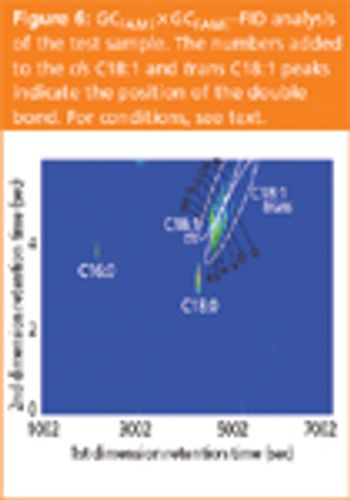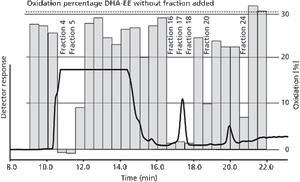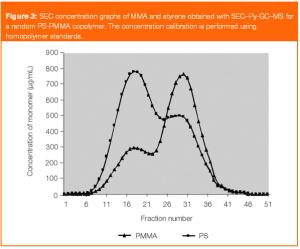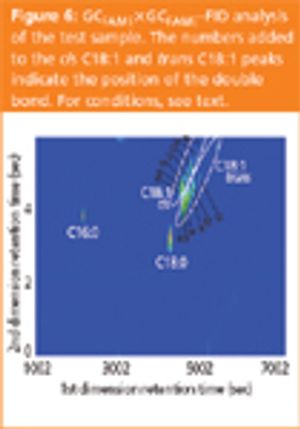Articles by Hans-Gerd Janssen

For lipid-containing food products like mayonnaise, determining nonvolatile lipid oxidation products, the precursor compounds for rancidity, makes it possible to predict product shelf life at an earlier stage in product development. A method based on normal-phase liquid chromatography with atmospheric pressure photoionization-mass spectrometry (LC–APPI-MS) was developed for this purpose.
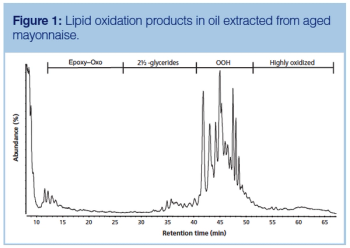
Monitoring lipid oxidation during the shelf life of lipid-containing food emulsions, such as mayonnaise, is challenging. It is, however, essential for the development of improved, consumer-preferred products. Determining the nonvolatile lipid oxidation products (NONVOLLOPS), the precursor compounds for rancidity, is required to determine the effectiveness of product stabilization technologies. A method based on normal-phase liquid chromatography with atmospheric pressure photo ionization-mass spectrometry (LC–APPI-MS) was developed for this purpose. The inclusion of a size-exclusion chromatography (SEC) step was needed to remove interfering diacylglycerides and free fatty acids from the samples. The combined SEC and normal-phase LC–APPI-MS method allowed the identification of a wide range of oxidized species including hydroperoxides, oxo-2½ glycerides, epoxides, and other oxidized species. The method was found to be more suitable for the analysis of large sample sets.

In this extended special feature to celebrate the 30th anniversary edition of LCGC Europe, leading figures from the separation science community explore contemporary trends in separation science and identify possible future developments. We asked key opinion leaders in the field to discuss the current state of the art in gas chromatography instruments.
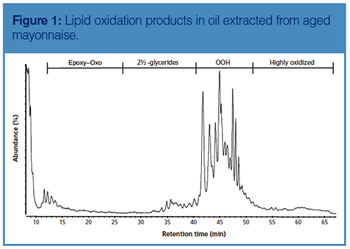
Monitoring lipid oxidation during the shelf life of lipid-containing food emulsions, such as mayonnaise, is challenging. It is, however, essential for the development of improved, consumer-preferred products. Determining the nonvolatile lipid oxidation products (NONVOLLOPS), the precursor compounds for rancidity, is required to determine the effectiveness of product stabilization technologies. A method based on normal-phase liquid chromatography with atmospheric pressure photo ionization-mass spectrometry (LC–APPI-MS) was developed for this purpose. The inclusion of a size-exclusion chromatography (SEC) step was needed to remove interfering diacylglycerides and free fatty acids from the samples. The combined SEC and normal-phase LC–APPI-MS method allowed the identification of a wide range of oxidized species including hydroperoxides, oxo-2½ glycerides, epoxides, and other oxidized species. The method was found to be more suitable for the analysis of large sample sets. The relative levels of NONVOLLOPS from bo

Edible oils and fats are complex mixtures of compounds. This article describes the role of normal-phase liquid chromatography as a generic sample pretreatment tool prior to detailed gas chromatography (GC) analysis.

Food provides the body with energy, and good food is indispensable for a healthy life. With a worldwide population of over seven billion people, it is clear that state-of-the art technology is needed to provide food of a sufficient high quality.

Food provides the body with energy and good food is indispensable for a healthy life.

Edible oils and fats are complex mixtures of compounds. To understand the properties of an oil or fat, information on groups of molecules, as well as individual molecules, is needed.
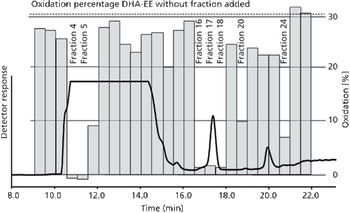
Multiple fractions can be tested in parallel with this fast method.

Many edible oils contain natural antioxidants that protect the oil from lipid oxidation, Knowledge on the identity of these oxidation inhibitors is crucial to find natural ways to protect healthy, unsaturated fats and oils from turning rancid. This article describes a new assay that allows rapid quantification of the lipid oxidation inhibting potenital of pure compounds or liquid chromatography (LC) fractions.

Two-dimensional liquid chromatography (2D-LC) allows analysts to deal with complex samples that either cannot be adequately separated by one-dimensional liquid chromatography (1D-LC) or require excessively long analysis times. Peptide mixtures, whose characterization is relevant in many areas (e.g., proteomics, food analysis, pharmaceutical, life sciences), are a clear example of such complexity. An overview of the most used 2D-LC modes of operation is presented and several examples of their use for the separation of peptide mixtures are described.

The pyrolysis fragments are first refocused on the top of the GC column, then separated and finally detected by the MS. At the end of the GC run the SEC flow is resumed again and the entire process is repeated.

Size-exclusion chromatography (SEC) and pyrolysis-gas chromatography (Py-GC) are commonly used to characterize copolymers. SEC is a powerful method to determine the molecular-weight distribution of polymers whereas Py-GC provides valuable information on their chemical composition. The combination of these two techniques could yield combined size and composition information for copolymers or polymer mixtures. A fully automated system was constructed to perform these two-dimensional (2D) characterizations. Several examples of the use of this new technique to comprehensively characterize polymers are described.
